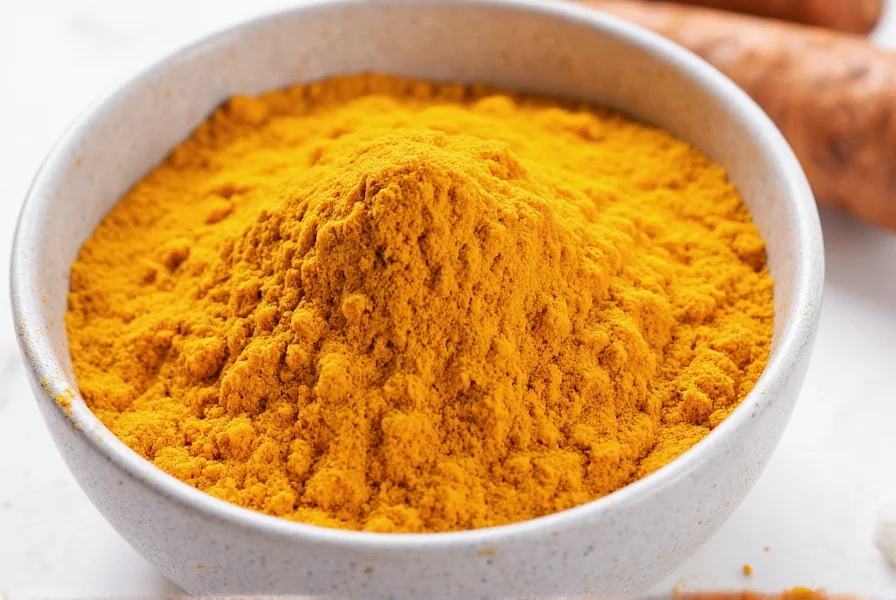When searching for better turmeric options, understanding what truly makes a product superior is essential for maximizing health benefits. Turmeric's primary active compound, curcumin, has well-documented anti-inflammatory and antioxidant properties, but its effectiveness depends entirely on proper formulation and quality control. Many consumers unknowingly purchase inferior products that deliver minimal benefits due to poor absorption or low potency.
What Actually Makes Turmeric Better
The difference between ordinary turmeric and truly effective formulations comes down to four scientifically validated factors:
| Quality Factor | Standard Product | Superior Product |
|---|---|---|
| Curcumin Concentration | 2-6% curcuminoids | 95% standardized extract |
| Bioavailability | Natural curcumin (poor absorption) | Enhanced with piperine or lipid delivery |
| Purity Verification | No independent testing | Third-party lab certification |
| Additional Ingredients | Fillers and binders | Targeted synergistic compounds |
Why Standard Turmeric Falls Short
Regular turmeric powder contains only 2-6% curcuminoids, the beneficial compounds responsible for turmeric's health effects. More critically, curcumin has extremely poor bioavailability—meaning your body absorbs very little of what you consume. Research published in Advances in Experimental Medicine and Biology demonstrates that unenhanced curcumin has a bioavailability rate of less than 1% when consumed orally.
Without proper formulation, most turmeric supplements pass through your system without delivering meaningful benefits. This explains why many people report no noticeable effects from standard turmeric products despite consistent use.
Key Features of High-Quality Turmeric
Standardized Curcumin Content
Look for products specifying "95% curcuminoids" or similar standardized extracts. This ensures consistent potency in every dose. Products listing "full spectrum turmeric" without specific curcumin percentages typically contain insufficient active compounds for therapeutic effects.
Bioavailability Enhancement Methods
Three scientifically supported approaches significantly improve absorption:
- Piperine inclusion: Black pepper extract (piperine) increases curcumin absorption by up to 2,000% according to Planta Medica research
- Lipid-based delivery: Formulations using phospholipids or oils improve solubility and intestinal uptake
- Nanoparticle technology: Advanced methods that reduce particle size for better cellular penetration
Third-Party Testing Verification
Reputable manufacturers provide Certificates of Analysis (COAs) from independent laboratories verifying:
- Actual curcuminoid content matches label claims
- Absence of heavy metals and contaminants
- No adulteration with cheaper substitutes
Reading Turmeric Supplement Labels Like an Expert
When evaluating products, focus on these critical label elements:
- Curcumin percentage: Should specify 95% or similar standardized extract
- Bioavailability method: Clear indication of absorption technology used
- Third-party seals: Look for NSF, USP, or ConsumerLab verification
- Ingredient transparency: Complete listing of all components with quantities
- Batch-specific testing: Reference to available COAs for current production runs
Avoid products with vague claims like "maximum strength" or "clinically proven" without specific evidence. The best turmeric supplements for inflammation provide detailed scientific backing for their formulation choices rather than relying on marketing language.
Common Misconceptions About Better Turmeric
Several widespread myths confuse consumers seeking high-quality turmeric:
- "Organic" equals better: While preferable, organic certification doesn't address curcumin content or bioavailability
- "Whole food" turmeric is superior: Raw turmeric powder lacks sufficient curcumin concentration for therapeutic effects
- Higher dosage always means better results: Without proper absorption, large doses provide minimal additional benefit
- All "enhanced" formulas work equally well: Different bioavailability technologies show significant performance variations in clinical studies
Practical Selection Guidelines
Follow these evidence-based steps when choosing better turmeric products:
- Verify minimum 95% curcuminoid content from the extract
- Confirm specific bioavailability technology is used (piperine, lipid delivery, etc.)
- Check for third-party testing documentation availability
- Review ingredient list for unnecessary fillers or allergens
- Research manufacturer's scientific credentials and transparency
- Compare cost per milligram of actual curcuminoids (not total product weight)
Remember that the most expensive option isn't necessarily the best turmeric for inflammation. Focus on verified quality markers rather than price or marketing claims when selecting supplements that deliver actual health benefits.
Frequently Asked Questions
What makes turmeric more effective for inflammation?
Turmeric becomes significantly more effective for inflammation when it contains standardized curcumin extracts (95% curcuminoids) combined with bioavailability enhancers like piperine. Research shows these formulations increase absorption by up to 2,000% compared to regular turmeric powder, allowing sufficient curcumin to reach target tissues and exert anti-inflammatory effects.
How can I verify if my turmeric supplement is high quality?
Check for three critical elements: 1) Standardized curcumin content (95% minimum), 2) Specific bioavailability technology mentioned (like piperine or lipid delivery), and 3) Available third-party Certificates of Analysis verifying potency and purity. Reputable manufacturers provide batch-specific testing documentation upon request. Avoid products with vague claims but no verifiable quality markers.
Does better turmeric need to contain black pepper?
While black pepper extract (piperine) is the most researched bioavailability enhancer for turmeric, it's not the only effective option. Lipid-based delivery systems and nanoparticle technologies also significantly improve absorption. However, products combining curcumin with piperine have the strongest clinical evidence supporting their effectiveness, with studies showing up to 2,000% increased absorption compared to curcumin alone.
What's the difference between turmeric and curcumin supplements?
Turmeric supplements contain the whole turmeric root powder, which has only 2-6% curcuminoids (the active compounds). Curcumin supplements contain standardized extracts with 95% curcuminoids, delivering significantly higher concentrations of the beneficial compounds. For therapeutic effects, curcumin supplements with bioavailability enhancement are substantially more effective than regular turmeric powder supplements.
How much curcumin should a quality turmeric supplement contain?
Effective turmeric supplements should provide 500-1,000mg of standardized 95% curcumin extract per dose. This delivers 475-950mg of actual curcuminoids, the amount used in most clinical studies showing therapeutic benefits. Products listing total turmeric content without specifying curcumin concentration typically contain insufficient active compounds for meaningful effects.











 浙公网安备
33010002000092号
浙公网安备
33010002000092号 浙B2-20120091-4
浙B2-20120091-4